Music performers with only one top 40 hit have been featured in the 50’s, 60’s and 70’s. Additionally, every genre has had its share from rock, pop, soul, doo wop, British Invasion, Garage Rock, Psychedelic music, bubblegum pop, soft rock, disco, easy listening and more.
The Penguins: Earth Angel
This is a song by American doo-wop group The Penguins. The single was released as their debut single in October 1954. It was written by Jesse Belvin, Curtis Williams, and Gaynel Hodge.

Ivory Joe Hunter: Since I Met You Baby
This rhythm and blues song written and recorded by Ivory Joe Hunter. The song, which Hunter recorded in 1956, became a hit and saw renewed popularity in 1969 when it was recorded by country music artist Sony James.

Bill Justis: Raunchy
This instrumental by Bill Justis was co-written by Sidney Manker and produced by Sam Phillips. From the album Cloud 9, the song was released as a single in September 23, 1957.

The Elegants: Little Star
This song was co-written by members Vito Picone and Arthur Venosa. Adapted from the melody of “Twinkle, Twinkle, Little Star, it topped the R&B Best Sellers list and the Billboard hot 100 when it was released as a single in 1958. Reportedly, the Elegants refused to pay payola to a prominent New York disc jockey, which inhibited air play of their follow up recordings.

Bobby Day: Rockin’ Robin
This song was written by Leon Rene under the pseudonym of Jimmie Thomas and recorded by Bobby Day in 1958. It was Day’s only hit single, becoming a number-two hit on the Billboard Hot 100. It also spent one week at the top of the charts (number one hit) in R&B sales. The 45 single release by Bobby Day showed “Rock-in Robin”.

The Teddy Bears: To Know Him is To Love Him
Phil Spector wrote this song after being inspired by the words written on his father’s tombstone. He was a member of the Teddy Bears and the song was recorded by them. Their recording spent 3 weeks at No. 1 on the Billboard Hot 100 singles chart in 1958.

Hollywood Argyles: Alley Oop
This song was inspired by the V.T. Hamlin comic strip also called Alley Oop. The Hollywood Argyles were a short lived studio band and recorded this song in 1960. It would reach #1 on the Billboard Hot 100 and number 3 on the US R & B charts.

Rosie and The Originals: Angel Baby
Lead singer Rosie Hamlin recorded this song independently on a two-track machine at the age of just 15. After convincing a San Diego department store to pipe the song through their listening booth in the record department the song took off. Highland Records signed the band and promoted the single. The song reached #5 on the Billboard Hot 100 in December of 1960 and remained on the chart for twelve weeks.

Ernie-K-Doe: Mother-In-Law
This one hit wonder would reach number one on both the billboard Hot 100 and also the R&B charts.

Bruce Channel: Hey Baby
This song was written by Margaret Cobb and Bruce Channel. Channel recorded the song in 1961 and released it on LeCam Records, a local Fort Worth, Texas label. After hitting big, the song was re-released on Smash Records for national distribution. The song reached number one on the Billboard Hot 100 for three weeks in March of 1962. The song would once again gain popularity when used in the 1987 film Dirty Dancing

The Tornados: Telstar
This 1962 instrumental was written and produced for a British band by Joe Meek. It would reach Number 1 on the Billboard Hot 100 in December of 1962. It was the second British band to find itself on the U.S. charts that year. It was the second instrumental single to hit No. 1 in 1962 on both the US and UK weekly charts.

The Exciters: Tell Him
Originally written as “Tell Her”, this 1962 song was written and composed by Bert Russell and Bert Berns. It would reach #4 in the US on Billboard Hot 100.

The Cascades: Rhythm of the Rain
This song was released in November 1962. It was written by Cascades band member John Claude Gummoe. It rose to number three on the US pop chart on March 9, 1963, and spent two weeks at number one on the US Easy Listening chart as well. Billboard ranked the record as the No. 4 song of 1963.

Doris Troy: Just One Look
This a song co-written by singers Doris troy and Gregory Carroll. The recording by Doris Troy was a hit in 1963.

Randy and the Rainbows: Denise
This song was written by Neil Levenson. The song was inspired by his childhood friend, Denise Lefrak. In 1963, the song became a popular top ten hit on the Billboard Hot 100.

The Surfaris: Wipe Out
This song is an instrumental composed by Bob Berryhill, Pat Connolly, Jim Fuller, and Ron Wilson. It is a twelve bar blues and was released as a single in 1963.

Gale Garnett: We’ll Sing in the Sunshine
This 1964 hit song was written and recorded by Gale Garrett. It would reach number four on the Billboard Hot 100 chart in September of 1964. The song also enjoyed success on easy listening and country music radio stations. “We’ll Sing in the Sunshine” would go to number one for the week of October 31 1964, and it also reached number one in Garnett’s native New Zealand that November. In Australia “We’ll Sing in the Sunshine” afforded Garnett a Top Ten hit with a #10 peak in October 1964. Garrett would win the Grammy Award for Best Ethnic or Traditional Folk Recording in 1965.
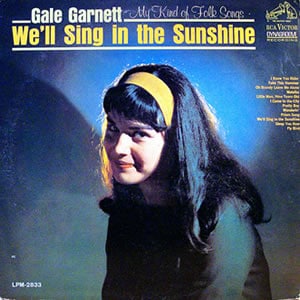
The Honeycombs: Have I The Right
This song was composed by Ken Howard and Alan Blaikley, who had been contracted to create a song for the London based group. Howard and Blaikley were impressed by the group’s lead vocalist, Dennis D’Ell, and the fact that they had a female drummer, Ann (‘Honey’) Lantree.
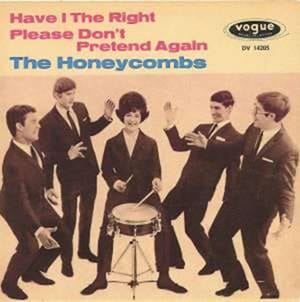
The Gentrys: Keep On Dancing
This rock song was written by Allen A. Jones and Willie David Young, originally performed by the Avantis in 1963. The Gentrys rerecorded this song in 1965. The Gentrys’ version was first released on Youngstown 601 in 1965, but soon nationally distributed by MGM Records. The song reached #4 in 1965 on the Billboard Hot 100 and remained there for two weeks. It surpassed a million copies in sales after leaving the charts.

Count Five: Psychotic Reaction
Count Five was a garage rock band who released this song in 1966. The song contains a repetitious rhythm that eventually changes to a faster beat, an electric guitar playing a hypnotic melody going up the scales. The record producers Winn and Hooven copied the rave-up section in the middle of the completed track and add it to the end as a fade out. The song was released as a single two times: on February 1965 with a local success, and on July 1966. The second release began to dominate radio playlists across the country. The song hit number five on the Billboard charts in September 1965.

Bob Lind: Elusive Butterfly
This song was written and performed by Bob Lind and released as a single in December of 1965. It would go on to reach #5 on the Billboard 100 and also on the adult contemporary chart in the spring of 1966. Lind’s “Elusive Butterfly” entered the charts on April 10, 1966 and spent three weeks at #2 during July 1966.

The Blues Magoos: (We Ain’t Got) Nothin’ Yet
This song was released in November 1966. It was a chart hit in the United States in February 1967. It was written by Ron Gilbert, Ralph Scala and Mike Esposito.

The Seeds: Pushin’ Too Hard
This rock song was written by vocalist Sky Saxon. It was released as a single in 1965, re-issued the following year, and peaked at number 36 on the U.S.Billboard Hot 100 chart in February 1967.

Yellow Balloon: Yellow Balloon
This song was considered a Top 30 hit single on the Billboard Hot 100 and was considered sunshine pop genre.
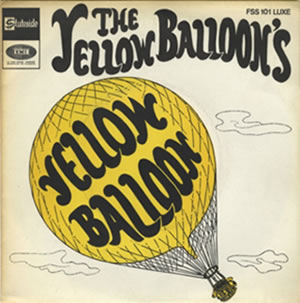
Every Mother’s Son: Come On Down to My Boat
This song was written by Jerry Goldstein and Wes Farrell. It reached #6 on the Billboard Hot 100 in 1967 and was ranked #22 on Billboard’s Top Hot 100 songs of 1967.

Robert Knight: Everlasting Love
This song was written by Buzz Cason and Mac Gayden and debuted in October 21, 1967.

Buffalo Springfield: For What It’s Worth
This song was released as a single on January 1967; it was later added to the re-release of their first album, Buffalo Springfield. The single peaked at number seven on the Billboard Hot 100 chart and is currently ranked at #63 on the Rolling Stone’s list of the 500 Greatest Songs of All Time.

The Lemon Pipers: Green Tambourine
This song has been credited as being one of the first bubblegum pop chart-toppers. It was released at the end of 1967 and spent one week on the Billboard Hot 100 in February of 1968. The Lemon Pipers would never repeat this success, although “Rice Is Nice” and “Jelly Jungle” did make it onto the charts in 1968.

The Human Beinz: Nobody But Me
This song first recorded by The Isley Brothers in 1962 but would be rereleased in 1968 by a garage band called the Human Beinz. This song would be their only chart success. The Human Beinz version uses only the closing refrain of the original song and is noted for repeating the word “no” 31 times in a row (the 31st time starting the word “nobody”), twice.

Friend & Lover: Reach Out of the Darkness
This song would beak at #10 on the Billboard Hot 100 chart for the folk duo Friend & Lover.

Mason Williams: Classical Gas
This instrumental musical was composed and performed by Mason Williams who was backed by members of the Wrecking Crew. It was originally released in 1968 but has been re-recorded and re-released several times since then.

Iron Butterfly: In-A-Gada-Da-Vida
This song is slightly over 17 minutes; it occupies the entire second side of the In-A-Gadda-Da-Vida album. The title is derived from the phrase “In the Garden of Eden”, and the lyrics are simple, and heard only at the beginning and the end. It was released in 1968.
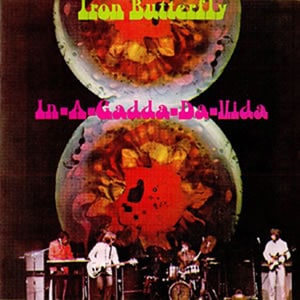
Zager and Evans: In the Year 2525
This 1969 hit song by the pop-rock duo was written and composed by Rick Evans in 1964 and originally released on a small regional record label (Truth Records) in 1968. It would reach number one on the Billboard Hot 100 chart beginning on July 12, 1969. It would remain there for six weeks.

The Youngbloods: Get Together
This song was written in the mid 1960’s by singer-songwriter Chet Powers aka Dino Valenti. The song is an appeal for peace and brotherhood, presenting the polarity of love versus fear, and the choice to be made between them.

Thunderclap Newman: Something in The Air
This song was written by Speedy Keen, who also sang the song. It was a number 1 single for three weeks on the UK Singles Chart on July 1969. The song has been used for films, television and adverts, and has been covered by several artists. The track was also included on Thunderclap Newman’s only album release called Hollywood Dreams over a year later and produced by Pete Townshend.

Steam: Na Na Hey Hey Kiss Him, Goodbye
This song was written by Paul Leka, Gary DeCarlo and Dale Frashuer. Steam was originally their fictious band name until they released it under Mercury’s subsidiary label Fontana. It became a number one pop single on the Billboard Hot 100 in late 1969 and remained on the chart until the early 1970’s. The song’s chorus remains well-known, and is frequently used as a crowd chant at many sporting events generally directed at the losing side in an elimination contest when the outcome is all but certain.

Blues Image: Ride Captain Ride
This song was co-written by the band’s singer-guitarist Mike Pinera and keyboardist Frank “Skip” Konte. Released as a slightly shortened single in the spring of 1970, it shot up the charts, eventually reaching No. 4 in the USA and Canadian charts, making it Blues Image’s first (and only) Top 40 chart hit.

The Five Stairsteps: O-o-h Child
This 1970 single was recorded by a Chicago soul family group and released on the Buddah label. “O-o-h Child” broke out in the key markets of Philadelphia and Detroit to rise as high as #8 on the Billboard Hot 100 in the summer of 1970. “O-o-h Child” is now regarded as a “soft soul” classic.

The Buoys: Timothy
This song was written by Rupert Holmes and was recorded by the Buoys in 1970. It tells the story of three men trapped in a collapsed mine, two of whom apparently resort to cannibalism against the third (the eponymous character Timothy). The song managed to reach the U.S. Billboard Top 40 chart on April 17, 1971, remaining on the chart for eight weeks, peaking at #17

Matthews Southern Comfort: Woodstock
This popular song was written by Joni Mitchell and included it on her 1970 album titled Ladies of the Canyon. It became a counterculture anthem and was eventually covered by Crosby, Stills, & Nash

Mott the Hoople: All the Young Dudes
This is a song written by David Bowie and released as a single by Mott the Hopple in 1972.

Pilot: Magic
This was a very popular 1974 song by Scottish pop rock band Pilot. It was written by band members Billy Byall and David Paton for their debut album, From the Album of the Same Name”. It charted most successfully in Canada, where it reached No. 1 on July 19, 1975. It would reach number 5 on the United States Billboard Hot 100.

Bill Medley and Jennifer Warnes: (I Had) The Time of My Life
This song was composed by Franke Previte, John DeNicola and Donald Markotwitz. It was recorded by Bill Medley and Jennifer Warnes and used as a theme song for the movie Dirty Dancing from 1987. The song would go on to win many awards including an Academy Award for the Best Original Song, a Golden Globe, and a Grammy Award.

1) Politics

Federal Aid Highway Act
June, 29, 1956, President Eisenhower signed the Federal Aid Highway Act, creating the highway system in the United States.
2) Major Events

Frank Sinatra
This singer, actor, and producer who was one of the most popular and influential musical artists of the 20th century. Sinatra’s professional career had stalled by the early 1950s, and he turned to Las Vegas, where he became one of its best known performers as part of the Rat Pack. His career would be reborn with the success of movies such as from Here to Eternity, In the Wee Small Hours, Songs for Swingin’ Lovers, Come Fly with Me, and Only the Lonely..
Wham-O
3) Entertainment

Connie Francis
Francis was a pop singer and the top-charting female vocalist of the late 1950s.
4) Television
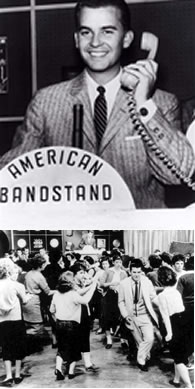
American Bandstand
August 5, 1957, American Bandstand premiered on ABC Television. This show was a local dance program and was filmed in Philadelphia.
5) Films

The Music Man
This musical was based on a story by Willson and Franklin Lacey. It was released in 1957 and became an instant Broadway hit.
6) Books

Profiles of Courage
This 1957 Pulitzer Prize winning volume of short biographies described acts of bravery and integrity by eight United States Senators throughout the Senate’s history. Edmund Burke, Charles James Fox and John F. Kennedy are all featured as well as John Quincy Adams, Daniel Webster and Sam Houston.
